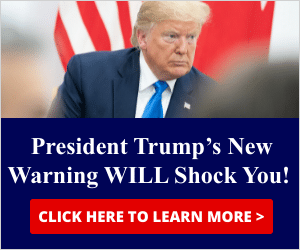Ukraine has been divided since its inception. The former Polish-Lithuanian Commonwealth, then the Austro-Hungarian Empire and the Northwestern Ukraine were once part of Central Ukraine. While the Russian Empire’s Southeast has long faced east, the Southeast always faces west. In the past, Western Ukraine voted for candidates with European-oriented policy while Eastern Ukraine voted for those with Russian-oriented policies. The country is in a tug of war and vulnerable to being ripped apart.
After the U.S.-sponsored, -supported coup in 2014, the rupture took place. The coup was designed to replace a Russian-friendly president with one chosen by the U.S. and pull Ukraine closer to the European and NATO security spheres.
When Ukraine faced the decision of whether to join the European Union or Russia, the stage was set for the coup. The history and geography of Ukraine would have us believe that the Ukrainian population was almost evenly divided. The U.S. and E.U. were divided when they rejected Putin’s solution that both could help Ukraine. The fateful tug of war began when Putin rejected Putin’s proposal that both could help Ukraine.
The E.U. The E.U. offered de facto NATO member in economic clothing. Stephen Cohen, Professor Emeritus at Princeton in Russian Studies, stated that the European Union proposal also contained “security policy” provisions… which would subordinate Ukraine to NATO.” These provisions required Ukraine to adhere to Europe’s “military- and security” policies. Article 4 of the E.U.’s Association Agreement with Ukraine stated that the agreement would “promote gradual convergence on foreign and security issues with the goal of Ukraine’s ever deeper involvement in the European security space.” Article 10 of the agreement added that the parties “shall explore the potential for military and technological cooperation.”
The coup that followed saw the U.S. select and install a president who was open to America and Europe. Putin pulled Russia from its post-Cold War compliance policy and attacked the U.S.-led, unipolar world. Russia annexed Crimea and civil war had already begun between the Donbas in East and Kiev and Western Ukraine.
However, Ukraine was a flashpoint before then.
Theoretically, Ukraine was always a potential flashpoint. An internal U.S. draft paper from 1991 recommended that Ukraine be excluded from the NATO liaison program. The U.K. warned Anthony Lake, Clinton’s national security adviser, in 1993 that expanding NATO to include Ukraine “would cross the most reddest Russian red lines.” Richard Holbrooke, who pushed for NATO expansion aggressively, stated that NATO was an alliance “Ukraine can probably never join.”
The then-U.S. Ambassador to Russia William Burns reported back to Condoleezza Rice that in a previously forgotten episode, the U.S. In a previously forgotten episode, the then-U.S. Ambassador to Russia William Burns reported back Condoleezza Rice that Ukraine’s entry into NATO was the brightest of all redlines to the Russian elite (not only Putin ). I have yet to meet anyone who sees Ukraine’s participation in NATO as any other than a direct threat to Russian interests …. Today, Russia will respond.”
The NATO summit in Bucharest 2008 saw the transition from theory to the real world. In an attempt to speed up Georgia’s and Ukraine’s NATO membership, President Bush asked for the summit to “welcome Georgia” and Ukraine into the Membership Action Plan. His request was stopped by Angela Merkel, Germany, and Nicolas Sarkozy, France. In compromise, Georgia was granted membership. “NATO welcomes Ukraine and Georgia’s Euro-Atlantic aspirations to join NATO. Today, we agree that these countries will be members of NATO.
This promise was seen by the Russian leadership as an existential threat. Putin stated that NATO membership for Ukraine and Georgia was a “direct threat” to Russian security. John Mearsheimer quotes an anonymous Russian journalist who said that Putin “flew into anger” and warned that Ukraine would join NATO “without Crimea or the eastern regions.” It will just collapse.”
Before then, Ukraine’s domestic politics were already warning of the coming crisis. Viktor Yanukovych was supported by the Russian-leaning East and Viktor Yushchenko received support from the Western region, which leans toward the U.S.A. and Europe. Yushchenko’s platform called for membership in the E.U. NATO.
Putin stated that he supported Yanukovych. He visited Kiev to support Yanukovych’s campaign. He publicly wished him success. He was highly regarded for Yanukovych’s economic record. Philip Short, Putin says that Gleb Pavlovsky (the Kremlin’s political strategist), moved to Kyiv to assist his election headquarters.
Sign up today
Receive weekly emails to your inbox
The first round resulted in a 39%-to-39%.32% split that favored Yushchenko. Round two was called. The Ukrainian Supreme Court overturned Yanukovych’s victory, despite rampant fraud in round 2.
The U.S. interference in Yushchenko was less well-known than the involvement of the Putin regime. Philip Short reports that George H.W. Bush was present in that election year. John McCain, Henry Kissinger and Bush had all traveled to Ukraine in order to show the U.S. their preferred outcome. Short reports that Bush sent Richard Lugar, the Chairman of Senate Foreign Relations Committee to Kyiv to serve as his personal emissary.
The tug-of-war between Russia and the U.S. had developed into 2004’s election. The Ukraine was at that time a flashpoint in what would become a new cold conflict. Viktor Yushchenko was the preferred candidate of the West and won the new election. Putin stated, “They are taking Ukraine from under my feet.”







